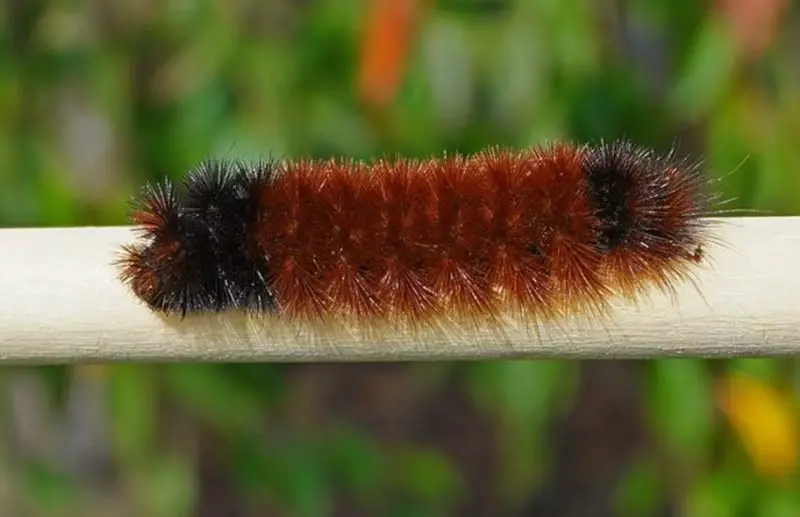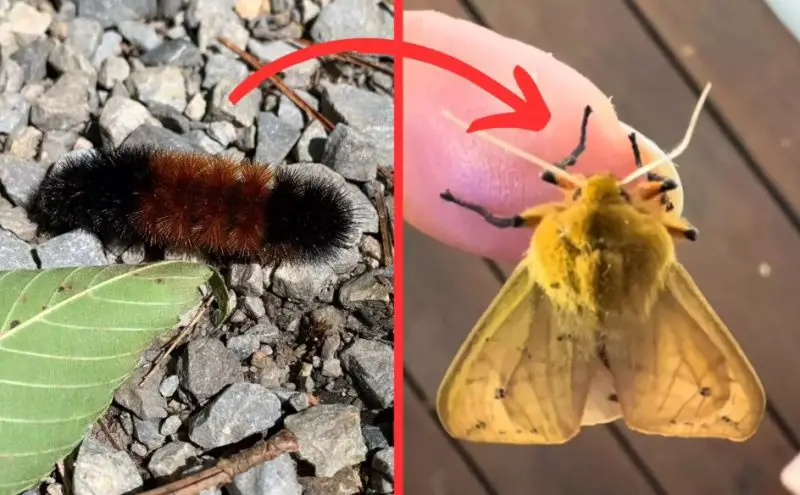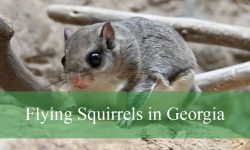Woolly bear caterpillars are among the most recognizable insects in North America, known for their fuzzy bodies and the folklore surrounding their ability to predict winter weather. With their distinct bands of black and reddish-brown hair, they’ve captured the curiosity of children and adults alike for generations. But how much do we really know about these fascinating creatures?
In this comprehensive guide, we’ll explore the life cycle of woolly bear caterpillars, their eating habits, whether they are poisonous or safe to touch, and the truth behind the myth of their weather-predicting abilities. Read on to discover everything you need to know about woolly bear caterpillars.
What Do Woolly Bear Caterpillars Turn Into?

Woolly bear caterpillars are not just fuzzy creatures crawling around in autumn—they are the larval stage of the Isabella tiger moth (Pyrrharctia isabella). Their journey from caterpillar to moth is a remarkable transformation, showcasing the wonder of nature’s life cycles.
The Life Cycle of Woolly Bear Caterpillars
The life cycle of a woolly bear caterpillar begins when the female Isabella tiger moth lays her eggs on the leaves of host plants. These eggs are tiny and almost invisible to the naked eye, hidden away on the undersides of leaves. Within a few days, the eggs hatch, and the larvae emerge as woolly bear caterpillars.
As larvae, they are easily recognizable due to their bristly coats of hair, which are segmented into black bands at both ends and a reddish-brown band in the middle. This coloring is not merely decorative; it serves as a defense mechanism, making them appear unappetizing to predators.
Woolly bears spend the warmer months feeding voraciously on various plants, storing energy for the challenging months ahead. When fall arrives and temperatures drop, they seek out sheltered places such as under fallen leaves, rocks, or logs to hibernate. Unlike other insects, woolly bear caterpillars can survive freezing temperatures by producing a cryoprotectant—a natural antifreeze—that prevents ice from forming in their cells. In this frozen state, they wait out the winter.
In spring, when temperatures rise, the caterpillar awakens from its frozen hibernation. It resumes feeding for a short period before seeking a safe place to pupate. During this stage, it spins a cocoon made of silk and its own bristly hairs, forming a protective casing around its body. Inside this cocoon, an extraordinary transformation occurs. The woolly bear caterpillar undergoes metamorphosis, reorganizing its entire body structure to emerge as an adult Isabella tiger moth.
These moths have pale yellow-orange wings with faint black spots and a wingspan of about two inches. They are nocturnal and are most active during warm, humid nights. After mating, female moths lay their eggs, and the cycle begins anew.
How Long Does the Transformation Take?

The entire life cycle of the woolly bear caterpillar, from egg to adult moth, typically takes about a year. This includes a long hibernation period, which can last up to several months depending on the climate. Interestingly, in colder climates, the caterpillar may hibernate multiple winters before completing its life cycle, making the transformation process even longer.
Are Woolly Bear Caterpillars Poisonous?
One of the most common questions about woolly bear caterpillars is whether they are poisonous or dangerous to humans and pets. Despite their bristly appearance, woolly bear caterpillars are not poisonous. Unlike some other caterpillar species with toxic hairs or venomous spines, woolly bears do not produce toxins that can harm humans or animals.
Why Do People Think They Are Dangerous?
The misconception likely stems from their fuzzy, spiky appearance, which resembles some toxic caterpillars. However, the hairs on woolly bear caterpillars are purely for defense. They help deter predators by making the caterpillar look unappetizing and difficult to swallow. Some animals, like birds, avoid eating them because the bristles can cause mild irritation in the mouth.
Can They Cause Skin Irritation?
While woolly bear caterpillars are not venomous, their bristles can cause mild irritation or itching for people with sensitive skin. This irritation is mechanical rather than chemical, meaning the tiny hairs can stick to the skin and cause discomfort, similar to fiberglass fibers. If you handle a woolly bear caterpillar, it’s best to wash your hands afterward to avoid irritation.
Are They Harmful to Pets?
Woolly bear caterpillars are generally harmless to pets, including dogs and cats. However, if ingested, the bristly hairs could cause mild irritation in the mouth or digestive tract, leading to temporary discomfort. It’s best to discourage pets from eating them to avoid any minor issues.
What Do Woolly Bear Caterpillars Eat?
Woolly bear caterpillars are herbivores with a surprisingly diverse diet. They feed on a wide variety of plants, showing a preference for low-growing vegetation and common weeds.
Dietary Preferences
During the larval stage, woolly bear caterpillars consume the leaves of numerous plants, including:
- Dandelions: A favorite due to their widespread availability.
- Plantains: Not the fruit, but the common broadleaf plant found in lawns and fields.
- Clover: Rich in nutrients and easily accessible.
- Nettles and Sunflowers: Common in wild habitats.
They also occasionally feed on garden plants such as cabbage, spinach, and other leafy greens. However, their feeding activity is usually minimal and does not cause significant damage to gardens or crops.
How Do They Find Food?
Woolly bear caterpillars rely on their sense of smell to locate food sources. They navigate slowly but steadily, munching on leaves along their path. Their voracious appetite in the fall is essential for storing energy to survive the winter months.
The Myth of Weather Prediction
One of the most popular legends about woolly bear caterpillars is their supposed ability to predict the severity of the upcoming winter. According to folklore, the width of the brown band in the middle of their body indicates the harshness of the winter. A narrow brown band supposedly means a severe winter, while a wide brown band indicates a mild winter.
Is It True?
Despite the enduring popularity of this myth, there is no scientific evidence to support the idea that woolly bear caterpillars can predict the weather. Their coloration is determined by age, species, and environmental factors such as humidity and diet. Older caterpillars tend to have narrower black bands because they have molted several times, which changes their coloration.
The myth gained popularity in the 1940s when Dr. C. H. Curran conducted a small study in New York, observing woolly bear caterpillars to see if their bands correlated with winter weather. Although his findings seemed to support the folklore, the study was too limited to be scientifically conclusive.
Where Can You Find Woolly Bear Caterpillars?
Woolly bear caterpillars are widespread across North America, particularly in open fields, meadows, and gardens. They thrive in habitats with abundant vegetation for feeding and hiding from predators. They are most commonly seen in the fall as they search for hibernation sites, but they can also be spotted in spring when they emerge from hibernation.
Fascinating Facts About Woolly Bear Caterpillars
Woolly bear caterpillars are remarkable creatures with unique survival adaptations. They can survive extreme cold by producing a natural antifreeze that prevents their cells from freezing. They are also known for their ability to hibernate for multiple winters before completing their transformation into moths, especially in colder climates.
Conclusion
Woolly bear caterpillars are more than just weather folklore—they are extraordinary insects with fascinating life cycles and unique adaptations. From their diverse diet to their ability to hibernate through freezing temperatures, these fuzzy creatures continue to intrigue and inspire curiosity.
Whether you encounter them crossing the road in autumn or curled up under leaves in winter, woolly bear caterpillars are a reminder of the wonders of the natural world.






